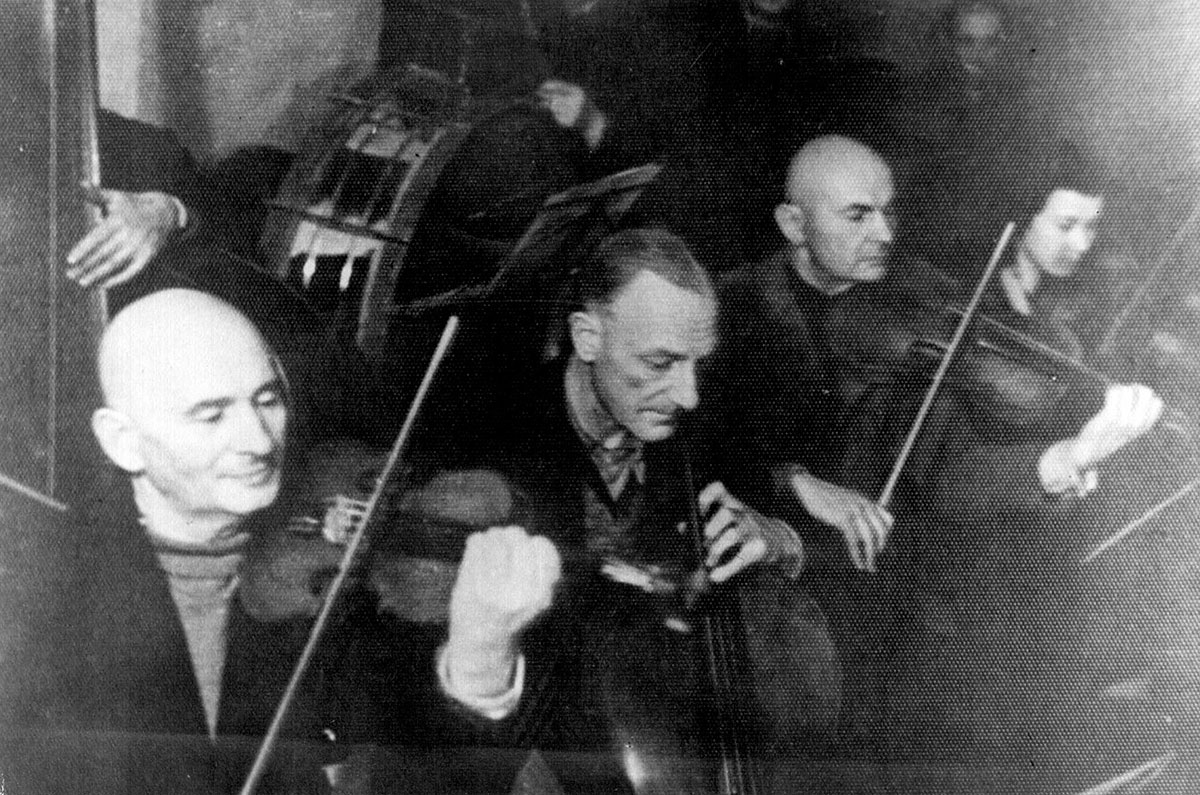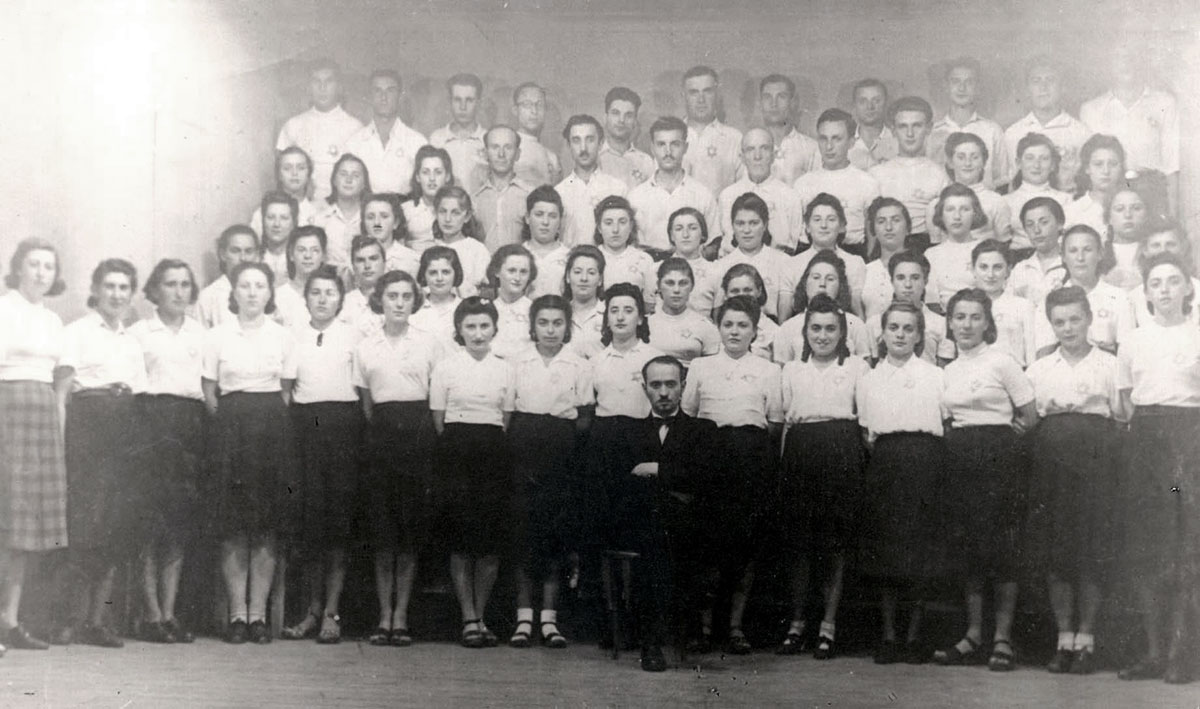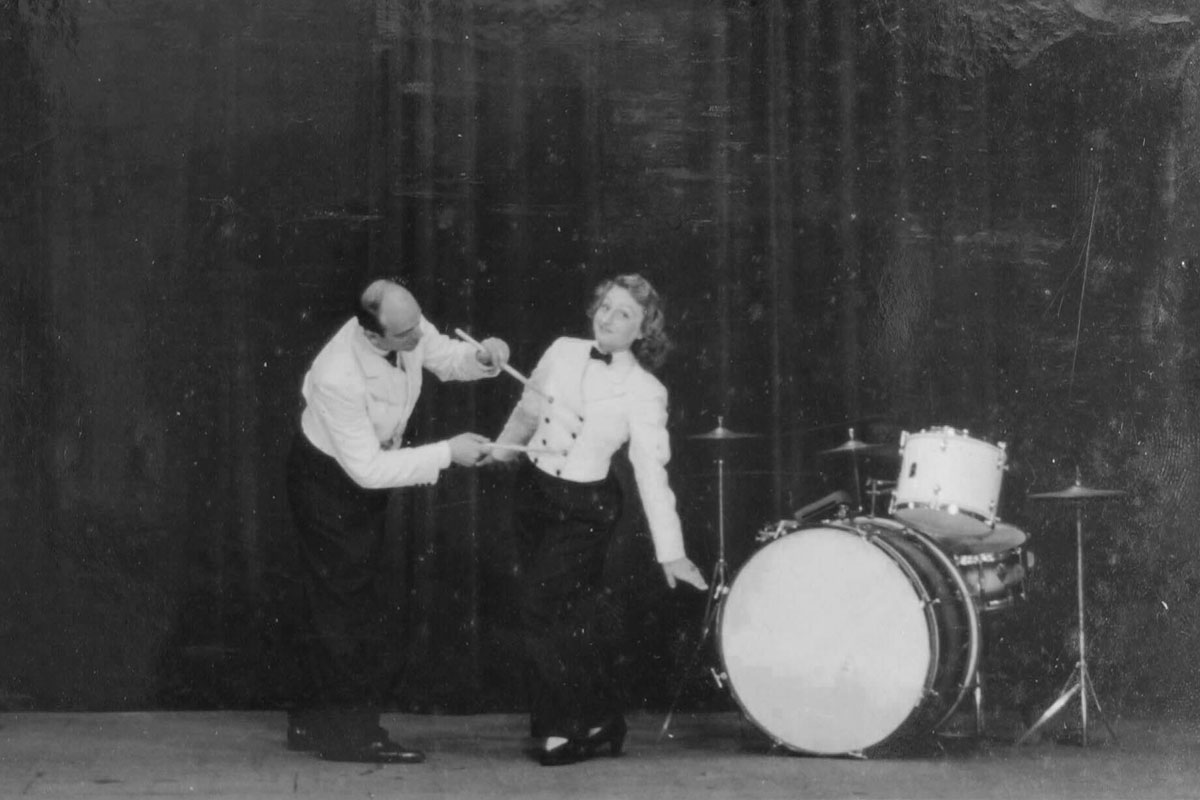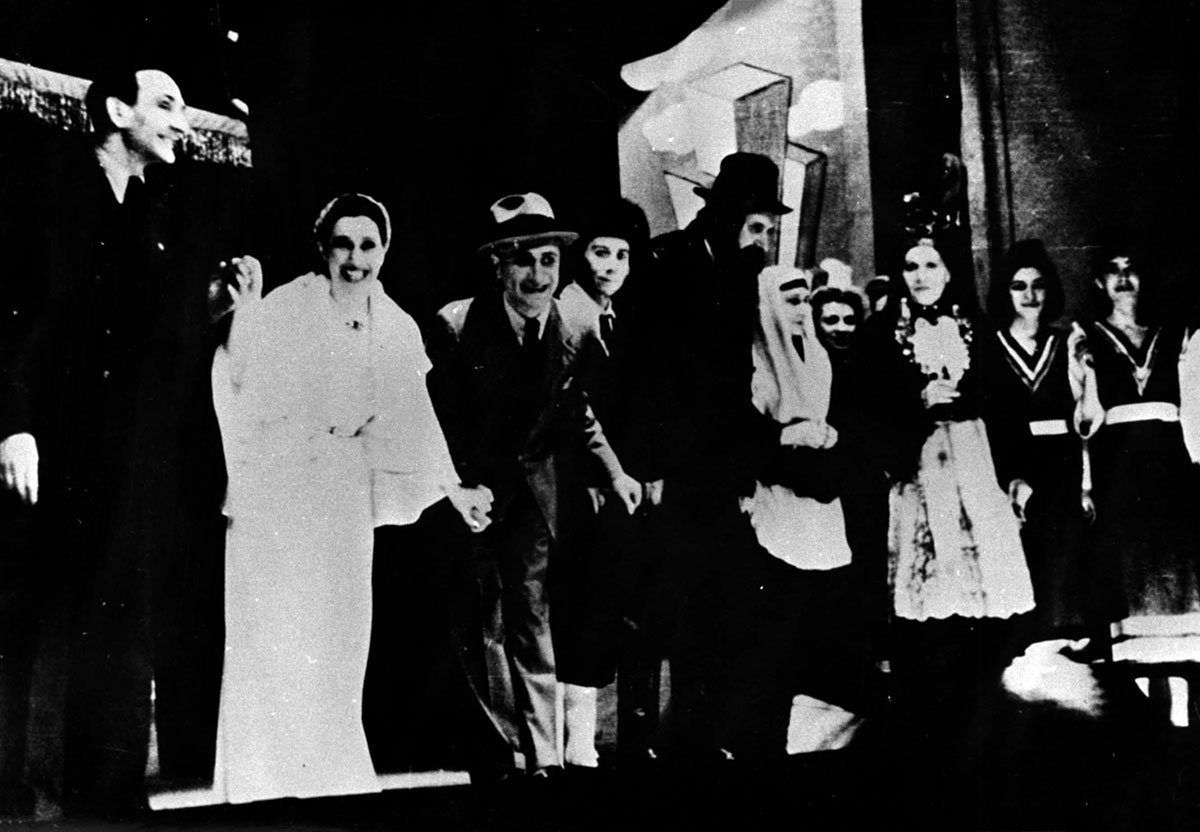During the Holocaust, while incarcerated in ghettos and camps, living in hiding or on the run, many Jews attempted to maintain the artistic and cultural activities that had existed before the war. In order to sketch and paint their fellow Jews, they obtained paint, charcoal and pencils, sometimes at mortal risk, and often in exchange for their daily rations; they fashioned objects, games and tools; many wrote diaries documenting their daily lives. The diaries of the Judenrat heads and the archives written in the ghettos also documented artistic and cultural life.
Yad Vashem Photo Archives 813/3
Jews worked to preserve the values of education and culture, both openly and clandestinely. Some established theater troupes and orchestras. Others danced, despite their hunger and weakness, as a symbol of the triumph of the human spirit over the appalling conditions and the omnipresent shadow of death. Still others held classes, musical and literary evenings, and ran youth movement activities, despite the blanket ban imposed by the Nazis.
Some Jews buried their documentation and artwork in secret hiding places. Others smuggled them out of the ghettos, sometimes at risk to their lives. Many tried to save the books that the Nazis wanted to burn or confiscate.
After the Holocaust, the few surviving Jews tried to retrieve their hidden items – diaries, drawings, letters etc. – from their hiding places. Despite the damage wreaked by time and exposure, some of these treasures were found after the war and restored. The little that survived bears witness to the strength of the human spirit under conditions of oppression, hunger, terror, cold, overcrowding, prolonged incarceration and mass murder.
Related Resources





